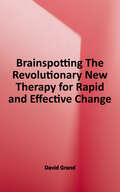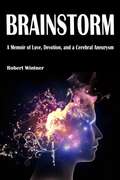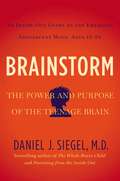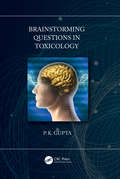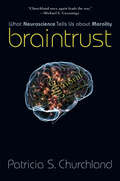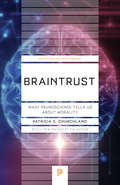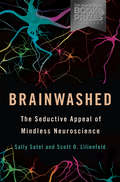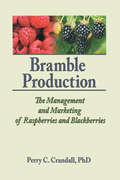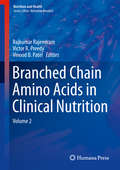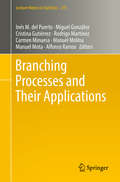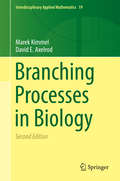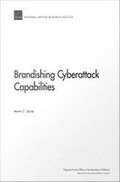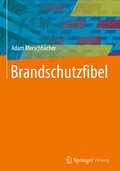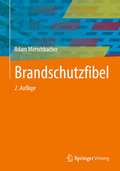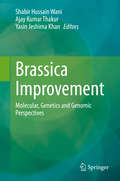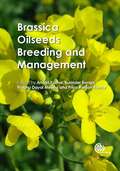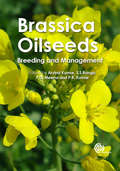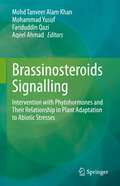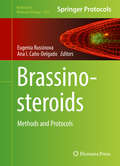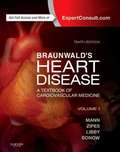- Table View
- List View
Brainspotting: The Revolutionary New Therapy for Rapid and Effective Change
by David GrandBrain-based therapy is the fastest-growing area in the field of psychological health because it has proven that it can immediately address issues that talk therapy can take years to heal. Now Dr. David Grand presents the next leap forward in psychological care―combining the strengths of brain-based and talk therapies into a powerful technique he calls Brainspotting. In Brainspotting, Dr. Grand reveals the key insight that allowed him to develop this revolutionary therapeutic tool: that where we look reveals critical information about what's going on in our brain. Join him to learn about: <p>• The history of Brainspotting―how it evolved from EMDR practice as a more versatile tool for brain-based therapy <p>• Brainspotting in action―case studies and evidence for the effectiveness of the technique <p>• An overview of the different aspects of Brainspotting and how to use them <p>• Between sessions―how clients can use Brainspotting on their own to reinforce and accelerate healing <p>• Why working simultaneously with the right and left brain can lead to expanded creativity and athletic performance <p>• How Brainspotting can be used to treat PTSD, anxiety, depression, addiction, physical pain, chronic illness, and much more <p><p> "Brainspotting lets the therapist and client participate together in the healing process," explains Dr. Grand. "It allows us to harness the brain's natural ability for self-scanning, so we can activate, locate, and process the sources of trauma and distress in the body." With Brainspotting, this pioneering researcher introduces an invaluable tool that can support virtually any form of therapeutic practice―and greatly accelerate our ability to heal.
Brainstorm
by Robert WintnerNine million Americans are touched by aneurysms during their lifetime. This is one story of love.Brainstorm is the candid and powerful memoir of the author's harrowing experience of an aneurysm and his road to recovery. It is a journey of love, devotion, and a clash of medical beliefs and countercultures. The fierce resolve of the author and his wife is extraordinary, inspiring, and matched only by the tremendous competence and care of the medical system-one to which the author initially stands in opposition, but that he later learns to admire and respect.This book is for anyone who has experienced the fear and difficulties of a major illness. The themes, truths, and above all, the compassion that this book shares will be familiar not just to the nine million Americans affected by aneurysms, but to anyone whose family has been touched by a medical trauma. Filled with raw emotion, Brainstorm affords quiet but powerful support to those suffering similar circumstances and strives to tell them that they are not alone.
Brainstorm: Detective Stories from the World of Neurology
by Suzanne O'SullivanA leading neurologist recounts some of her most astonishing, challenging cases, which demonstrate how crucial the study of epilepsy has been to our understanding of the brain.Brainstorm follows the stories of people whose medical diagnoses are so strange even their doctor struggles to know how to solve them. A man who sees cartoon characters running across the room; a girl whose world suddenly seems completely distorted, as though she were Alice in Wonderland; another who transforms into a ragdoll whenever she even thinks about moving.The brain is the most complex structure in the universe. Neurologists must puzzle out life-changing diagnoses from the tiniest of clues, the ultimate medical detective work. In this riveting book, Suzanne O'Sullivan takes you with her as she tracks the clues of her patients' symptoms. It's a journey that will open your eyes to the unfathomable intricacies of our brains and the infinite variety of human experience.
Brainstorm: The Power and Purpose of the Teenage Brain
by Daniel J. SiegelIn this New York Times-bestselling book, Dr. Daniel Siegel shows parents how to turn one of the most challenging developmental periods in their children's lives into one of the most rewarding. Between the ages of 12 and 24, the brain changes in important, and oftentimes maddening, ways. It's no wonder that many parents approach their child's adolescence with fear and trepidation. According to renowned neuropsychiatrist Daniel Siegel's New York Times bestseller Brainstorm, if parents and teens can work together to form a deeper understanding of the brain science behind all the tumult, they will be able to turn conflict into connection and form a deeper understanding of one another. In Brainstorm, Siegel illuminates how brain development impacts teenagers' behavior and relationships. Drawing on important new research in the field of interpersonal neurobiology, he explores exciting ways in which understanding how the teenage brain functions can help parents make what is in fact an incredibly positive period of growth, change, and experimentation in their children's lives less lonely and distressing on both sides of the generational divide. Brainstorm is a current nominee for a Books for a Better Life award.
Brainstorming Questions in Toxicology
by P. K. GuptaBrainstorming Questions in Toxicology is designed to serve as a comprehensive, quick reference supplement for various examinations that include sections on toxicology. It reflects the breadth and multidisciplinary nature of toxicology with an objective approach to the subject. With 3500 short questions and answers, multiple choice questions, true/false or correct/incorrect statements, fill in the blanks, and matching the statements, this book is a helpful tool for students, teachers and toxicologists preparing for licensure and certification exams. It is also a resource or refresher for toxicologists working in pharmacy, medical, clinical and forensic toxicology, veterinary, and other related fields such as environment and eco-toxicology. Key Features: Serves as a refresher for academicians and professionals in the field of toxicology Provides an essential guide for the student who needs a study aid for toxicology and the teacher of toxicology who needs inspiration when composing questions for their students Supplements in-house training courses in toxicology that exist in some pharmaceutical and chemical industries
Brainstorms: Philosophical Essays on Mind and Psychology
by Daniel Clement DennettDiscussions on artificial intelligence, philosophy, and cognitive psychology.
Brainteaser Physics: Challenging Physics Puzzlers
by Göran GrimvallDoes a glass of ice water filled to the brim overflow when the ice melts? Does the energy inside a sauna increase when you heat it up? What's the best way to cool your coffee—adding the creamer first or last? These and other challenging puzzlers provide a fresh—and fun—approach to learning real physics. Presenting both classic and new problems, Brainteaser Physics challenges readers to use imagination and basic physics principles to find the answers. Göran Grimvall provides detailed and accessible explanations of the solutions, sometimes correcting the standard explanations, sometimes putting a new twist on them. He provides diagrams and equations where appropriate and ends each problem by discussing a specific concept or offering an extra challenge.With Brainteaser Physics, students and veteran physicists alike can sharpen their critical and creative thinking—and have fun at the same time.
Braintrust: What Neuroscience Tells Us About Morality
by Patricia S. ChurchlandWhat is morality? Where does it come from? And why do most of us heed its call most of the time? In Braintrust, neurophilosophy pioneer Patricia Churchland argues that morality originates in the biology of the brain. She describes the "neurobiological platform of bonding" that, modified by evolutionary pressures and cultural values, has led to human styles of moral behavior. The result is a provocative genealogy of morals that asks us to reevaluate the priority given to religion, absolute rules, and pure reason in accounting for the basis of morality. Moral values, Churchland argues, are rooted in a behavior common to all mammals--the caring for offspring. The evolved structure, processes, and chemistry of the brain incline humans to strive not only for self-preservation but for the well-being of allied selves--first offspring, then mates, kin, and so on, in wider and wider "caring" circles. Separation and exclusion cause pain, and the company of loved ones causes pleasure; responding to feelings of social pain and pleasure, brains adjust their circuitry to local customs. In this way, caring is apportioned, conscience molded, and moral intuitions instilled. A key part of the story is oxytocin, an ancient body-and-brain molecule that, by decreasing the stress response, allows humans to develop the trust in one another necessary for the development of close-knit ties, social institutions, and morality. A major new account of what really makes us moral, Braintrust challenges us to reconsider the origins of some of our most cherished values.
Braintrust: What Neuroscience Tells Us about Morality (Princeton Science Library)
by Patricia S. ChurchlandWhat is morality? Where does it come from? And why do most of us heed its call most of the time? In Braintrust, neurophilosophy pioneer Patricia Churchland argues that morality originates in the biology of the brain. She describes the "neurobiological platform of bonding" that, modified by evolutionary pressures and cultural values, has led to human styles of moral behavior. The result is a provocative genealogy of morals that asks us to reevaluate the priority given to religion, absolute rules, and pure reason in accounting for the basis of morality. Moral values, Churchland argues, are rooted in a behavior common to all mammals--the caring for offspring. The evolved structure, processes, and chemistry of the brain incline humans to strive not only for self-preservation but for the well-being of allied selves--first offspring, then mates, kin, and so on, in wider and wider "caring" circles. Separation and exclusion cause pain, and the company of loved ones causes pleasure; responding to feelings of social pain and pleasure, brains adjust their circuitry to local customs. In this way, caring is apportioned, conscience molded, and moral intuitions instilled. A key part of the story is oxytocin, an ancient body-and-brain molecule that, by decreasing the stress response, allows humans to develop the trust in one another necessary for the development of close-knit ties, social institutions, and morality. A major new account of what really makes us moral, Braintrust challenges us to reconsider the origins of some of our most cherished values.
Brainwashed: The Seductive Appeal of Mindless Neuroscience
by Scott O. Lilienfeld Sally SatelIn recent years, the advent of MRI technology seems to have unlocked the secrets of the human mind, revealing the sources of our deepest desires, intentions, and fears. As renowned psychiatrist and scholar Sally Satel and psychologist Scott O. Lilienfeld demonstrate in Brainwashed, however, the explanatory power of brain scans in particular and neuroscience more generally has been vastly overestimated. Although acknowledging its tremendous potential, the authors argue that the overzealous application of the burgeoning field of brain science has put innocent people in jail, prevented addicts from healing themselves, and undermined notions of free will and responsibility. A provocative challenge to the use and abuse of a seductive science, Brainwashed offers an essential corrective to determinist explanations of human behavior.
Bramble Production
by Perry C. CrandallBramble Production provides growers with a basic understanding of how raspberry and blackberry plants grow and respond to changes in their environment. Author Perry Crandall includes management practices used by successful growers, making this book a helpful production guide that you can use for making rational decisions. This knowledge of successful production can be used to recommend or adopt management programs specially designed to produce optimum yields with maximum profits.
Branched Chain Amino Acids in Clinical Nutrition: Volume 2 (Nutrition and Health)
by Victor R. Preedy Vinood B. Patel Rajkumar RajendramThis is the first volume in a 2-volume compendium that is the go-to source for both research- and practice-oriented information on the importance of branched chain amino acids in maintaining the nutritional status and overall health of individuals, especially those with certain disease conditions. Over 150 well recognized and respected contributors have come together to compile these up-to-date and well-referenced works. The volumes will serve the reader as the benchmarks in this complex area of interrelationships between dietary protein intakes and individual amino acid supplementation, the unique role of the branched chain amino acids in the synthesis of brain neurotransmitters, collagen formation, insulin and glucose modulation and the functioning of all organ systems that are involved in the maintenance of the body's metabolic integrity. Moreover, the physiological, genetic and pathological interactions between plasma levels of branched chain amino acids and aromatic amino acids are clearly delineated so that students as well as practitioners can better understand the complexities of these interactions. Branched Chain Amino Acids in Clinical Nutrition: Volume 1 covers basic processes at the cellular level, inherited defects in branched chain amino acid metabolism, and experimental models of growth and disease states.
Branching Processes and Their Applications (Lecture Notes in Statistics #219)
by Inés M. del Puerto Miguel González Cristina Gutiérrez Rodrigo Martínez Carmen Minuesa Manuel Molina Manuel Mota Alfonso RamosThis volume gathers papers originally presented at the 3rd Workshop on Branching Processes and their Applications (WBPA15), which was held from 7 to 10 April 2015 in Badajoz, Spain (http://branching. unex. es/wbpa15/index. htm). The papers address a broad range of theoretical and practical aspects of branching process theory. Further, they amply demonstrate that the theoretical research in this area remains vital and topical, as well as the relevance of branching concepts in the development of theoretical approaches to solving new problems in applied fields such as Epidemiology, Biology, Genetics, and, of course, Population Dynamics. The topics covered can broadly be classified into the following areas: 1. Coalescent Branching Processes 2. Branching Random Walks 3. Population Growth Models in Varying and Random Environments 4. Size/Density/Resource-Dependent Branching Models 5. Age-Dependent Branching Models 6. Special Branching Models 7. Applications in Epidemiology 8. Applications in Biology and Genetics Offering a valuable reference guide to contemporary branching process theory, the book also explores many open problems, paving the way for future research.
Branching Processes in Biology (Interdisciplinary Applied Mathematics #19)
by Marek Kimmel David E. AxelrodThis book provides a theoretical background of branching processes and discusses their biological applications. Branching processes are a well-developed and powerful set of tools in the field of applied probability. The range of applications considered includes molecular biology, cellular biology, human evolution and medicine. The branching processes discussed include Galton-Watson, Markov, Bellman-Harris, Multitype, and General Processes. As an aid to understanding specific examples, two introductory chapters, and two glossaries are included that provide background material in mathematics and in biology. The book will be of interest to scientists who work in quantitative modeling of biological systems, particularly probabilists, mathematical biologists, biostatisticians, cell biologists, molecular biologists, and bioinformaticians. The authors are a mathematician and cell biologist who have collaborated for more than a decade in the field of branching processes in biology for this new edition. This second expanded edition adds new material published during the last decade, with nearly 200 new references. More material has been added on infinitely-dimensional multitype processes, including the infinitely-dimensional linear-fractional case. Hypergeometric function treatment of the special case of the Griffiths-Pakes infinite allele branching process has also been added. There are additional applications of recent molecular processes and connections with systems biology are explored, and a new chapter on genealogies of branching processes and their applications. Reviews of First Edition: "This is a significant book on applications of branching processes in biology, and it is highly recommended for those readers who are interested in the application and development of stochastic models, particularly those with interests in cellular and molecular biology. " (Siam Review, Vol. 45 (2), 2003) "This book will be very interesting and useful for mathematicians, statisticians and biologists as well, and especially for researchers developing mathematical methods in biology, medicine and other natural sciences. " (Short Book Reviews of the ISI, Vol. 23 (2), 2003)
Brand Seduction: How Neuroscience Can Help Marketers Build Memorable Brands
by Daryl WeberAn examination of the nature of brands, how they exist and behave in the mind, and how marketers and business leaders can use this to their advantage.In Brand Seduction, author Daryl Weber reveals the latest psychological and neuroscientific discoveries about how our minds process brand information and makes decisions, and the important roles our emotions and unconscious play in our selections.Through simple language, engaging stories, and real-world examples, Brand Seduction shows you how to decode, build, and use these hidden brand fantasies to grow your brand and business.Praise for Brand Seduction“Powerful, profound, and beautifully written, Brand Seduction raises the bar for every marketer to do work that truly matters.” —Seth Godin, author of All Marketers Are Liars“Clever, creative, and jam-packed with useful insights, Brand Seduction shows how our brain secretly shapes our choices in ways we may never have realized.” —Jonah Berger, Wharton Professor and bestselling author of Contagious and Invisible Influence“With solid research and real-world examples, Daryl Weber makes the science of marketing inspiring and actionable. Brand Seduction is a valuable tool for anyone seeking to leverage the power of their brands.” —Nir Eyal, author of Hooked
Brandishing Cyberattack Capabilities
by Martin C. LibickiDeterrence is possible only when others have at least a good idea of possible U.S. military reprisals, but cyberattack capabilities resist such demonstration. This report explores ways they can be and under what circumstances, then goes on to examine the difficulties and the drawbacks. Such "brandishing" is no panacea and could even backfire if misinterpreted. Its success also relies on the strength of other elements of the deterrence posture.
Brandschutzfibel
by Adam MerschbacherDie „Brandschutzfibel“ wird dem Fachmann für Brandschutz, dem interessierten Laien und den Beratern in Versicherungen, den Feuerwehren, sowie Herstellern in der Planung künftiger Brandschutzprodukte einen fundierten Überblick über wirkungsvolle und sinnvolle Brandschutzmaßnahmen im privaten und vor allem gewerblichen Umfeld geben. Das Wort „Gewerbe“ soll, auch wenn es nicht immer passend ist, für Unternehmen, Ladengeschäfte, Banken, Kirchen, Behörden, Museen, ja sogar für einen Zirkus und den Tierpark stehen. Dabei spielt die Größe überhaupt keine Rolle. Die Brandschutzrichtlinien gelten für die Würstelbude ebenso wie für größte Industrieunternehmen, in jeweils angepasster Form.
Brandschutzfibel
by Adam MerschbacherDie „Brandschutzfibel“ wird dem Fachmann für Brandschutz, dem interessierten Laien und den Beratern in Versicherungen, den Feuerwehren, sowie Herstellern in der Planung künftiger Brandschutzprodukte einen fundierten Überblick über wirkungsvolle und sinnvolle Brandschutzmaßnahmen im privaten und vor allem gewerblichen Umfeld geben. Das Wort „Gewerbe“ soll, auch wenn es nicht immer passend ist, für Unternehmen, Ladengeschäfte, Banken, Kirchen, Behörden, Museen, ja sogar für einen Zirkus und den Tierpark stehen. Dabei spielt die Größe überhaupt keine Rolle. Die Brandschutzrichtlinien gelten für die Würstelbude ebenso wie für größte Industrieunternehmen, in jeweils angepasster Form.
Brassica Improvement: Molecular, Genetics and Genomic Perspectives
by Shabir Hussain Wani Ajay Kumar Thakur Yasin Jeshima KhanGlobal population is mounting at an alarming stride to surpass 9.3 billion by 2050, whereas simultaneously the agricultural productivity is gravely affected by climate changes resulting in increased biotic and abiotic stresses. The genus Brassica belongs to the mustard family whose members are known as cruciferous vegetables, cabbages or mustard plants. Rapeseed-mustard is world’s third most important source of edible oil after soybean and oil palm. It has worldwide acceptance owing to its rare combination of health promoting factors. It has very low levels of saturated fatty acids which make it the healthiest edible oil that is commonly available. Apart from this, it is rich in antioxidants by virtue of tocopherols and phytosterols presence in the oil. The high omega 3 content reduces the risk of atherosclerosis/heart attack. Conventional breeding methods have met with limited success in Brassica because yield and stress resilience are polygenic traits and are greatly influenced by environment. Therefore, it is imperative to accelerate the efforts to unravel the biochemical, physiological and molecular mechanisms underlying yield, quality and tolerance towards biotic and abiotic stresses in Brassica. To exploit its fullest potential, systematic efforts are needed to unlock the genetic information for new germplasms that tolerate initial and terminal state heat coupled with moisture stress. For instance, wild relatives may be exploited in developing introgressed and resynthesized lines with desirable attributes. Exploitation of heterosis is another important area which can be achieved by introducing transgenics to raise stable CMS lines. Doubled haploid breeding and marker assisted selection should be employed along with conventional breeding. Breeding programmes aim at enhancing resource use efficiency, especially nutrient and water as well as adoption to aberrant environmental changes should also be considered. Biotechnological interventions are essential for altering the biosynthetic pathways for developing high oleic and low linolenic lines. Accordingly, tools such as microspore and ovule culture, embryo rescue, isolation of trait specific genes especially for aphid, Sclerotinia and alternaria blight resistance, etc. along with identification of potential lines based on genetic diversity can assist ongoing breeding programmes. In this book, we highlight the recent molecular, genetic and genomic interventions made to achieve crop improvement in terms of yield increase, quality and stress tolerance in Brassica, with a special emphasis in Rapeseed-mustard.
Brassica Oilseeds- Breeding and Mnaagement
by Priya Priya Arvind Kumar Surinder S Banga Prabhu PrabhuOilseed brassicas are among the largest traded agricultural commodities and are grown in around fifty countries worldwide. Utilised for both consumption and bioenergy use, demand is increasing and this book covers the entire gamut of oilseed brassicas. Beginning with an introduction and then organised into two sections, it reviews genetics and genomics (including breeding, heterosis and selection methods) and stress management and important pathogens, to provide a complete overview of brassica oilseeds.
Brassica Oilseeds: Breeding and Management
by Arvind KumarOilseed brassicas are among the largest traded agricultural commodities and are grown in around fifty countries worldwide. Utilised for both consumption and bioenergy use, demand is increasing and this book covers the entire gamut of oilseed brassicas. Beginning with an introduction and then organised into two sections, it reviews genetics and genomics (including breeding, heterosis and selection methods) and stress management and important pathogens, to provide a complete overview of brassica oilseeds.
Brassinosteroids Signalling: Intervention with Phytohormones and Their Relationship in Plant Adaptation to Abiotic Stresses
by Mohammad Yusuf Mohd Tanveer Alam Khan Fariduddin Qazi Aqeel AhmadThis book presents the state of the skill of understanding brassinosteroids (BRs) signaling plus crosstalk with phytohormone and their association in plant adaptation to abiotic stresses comprising physiological, biochemical, and molecular developments. Due to progressively adverse environmental conditions and scarce natural resources, high-efficient crops have become more important than ever. For the successful improvement of stress-tolerant plants, it is vital to understand the precise signaling appliances that plants practice to abide stresses as well as how much these mechanisms are convinced by phytohormone. However, it is also debatable on which step plants can attain brassinosteroids (BRs) signaling from an evolutionary viewpoint. BRs are involved in modulating a large array of important functions throughout a plant’s life cycles. BRs are considered as one of the most important plant steroidal hormones that show a varied role in observing a wide range of developmental practices in plants. Our grip on brassinosteroids signaling has quickly extended over the past two decades, owing in part to the isolation of the constituents intricate in the signal transduction trail. The book proposes a useful guide for plant researchers and graduate students in connected areas.
Brassinosteroids: Methods and Protocols (Methods in Molecular Biology #1564)
by Eugenia Russinova Ana I. Caño-DelgadoThis detailed volume compiles state-of-the-art methodologies for the study of brassinosteroid hormones, contributed by recognized researchers in the field, in order to bring together different experimental and theoretical biology techniques for addressing the questions of how brassinosteroids function in Arabidopsis and other agriculturally valuable species, such as rice and sorghum. Written for the highly successful Methods in Molecular Biology series, chapters include introductions to their respective topics, lists of the necessary materials and reagents, step-by-step, readily reproducible laboratory protocols, and tips on troubleshooting and avoiding known pitfalls. Authoritative and practical, Brassinosteroids: Methods and Protocols assesses a wide range of appealing methodologies for experts as well as researchers with a general interest in hormone signaling in plants.
Braunkohlesanierung: Grundlagen, Geotechnik, Wasserwirtschaft, Brachflächen, Rekultivierung, Vermarktung
by Carsten Drebenstedt Mahmut KuyumcuAllein im Raum Halle/Leipzig und der Lausitz wurden etwa 30 Braunkohlentagebaue und 90 Kraftwerks- und Veredlungsstandorte seit Anfang der 1990er Jahre saniert mit dem Ziel, Umweltsch#65533;den zu beseitigen und die Landschaft wiederherzustellen. Vertreter aus Beh#65533;rden und Hochschulen, Sanierungsunternehmen und Planungsb#65533;ros erl#65533;utern die eigens daf#65533;r entwickelten Technologien, sie beschreiben die Managementstrukturen und ihre Erfahrungen bei der Sanierung des stillgelegten Braunkohlenbergbaus. Mit zahlreichen Abbildungen und Tabellen sowie einem Glossar.
Braunwald's Heart Disease: A Textbook of Cardiovascular Medicine (Volume #1)
by Douglas L. Mann Douglas P. Zipes Peter Libby Robert O. Bonow Eugene BraunwaldVolume 1 of the two-part textbook.
